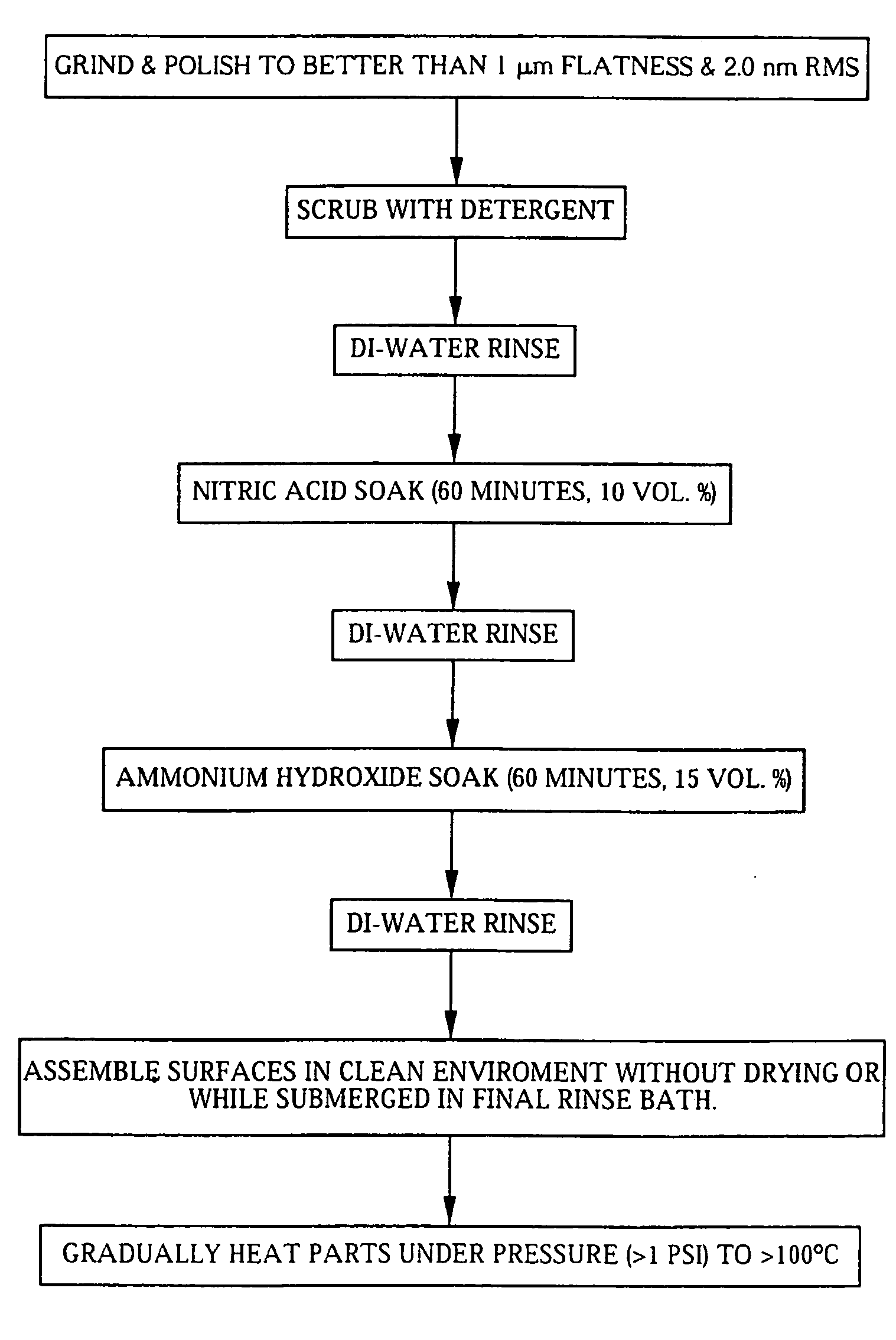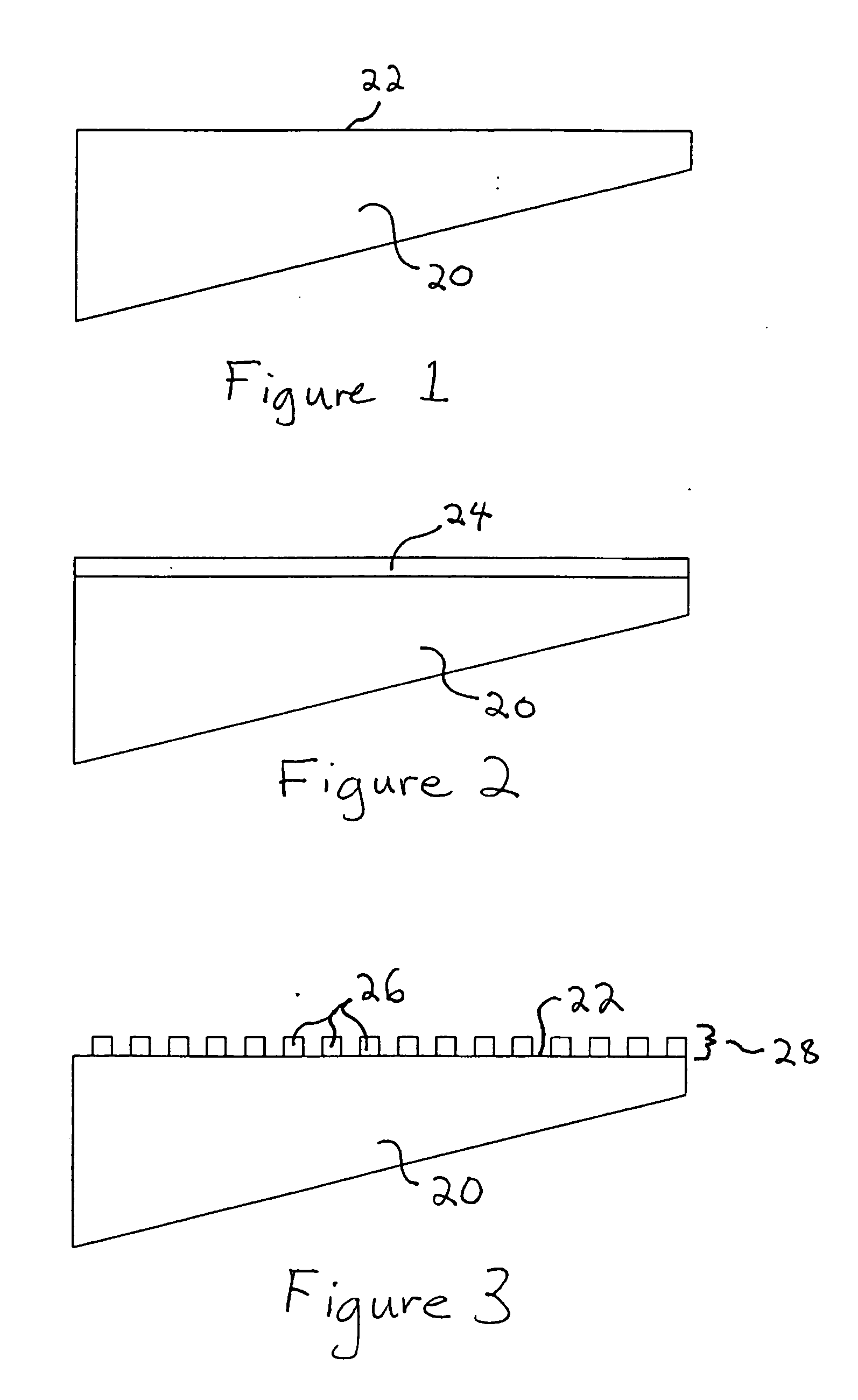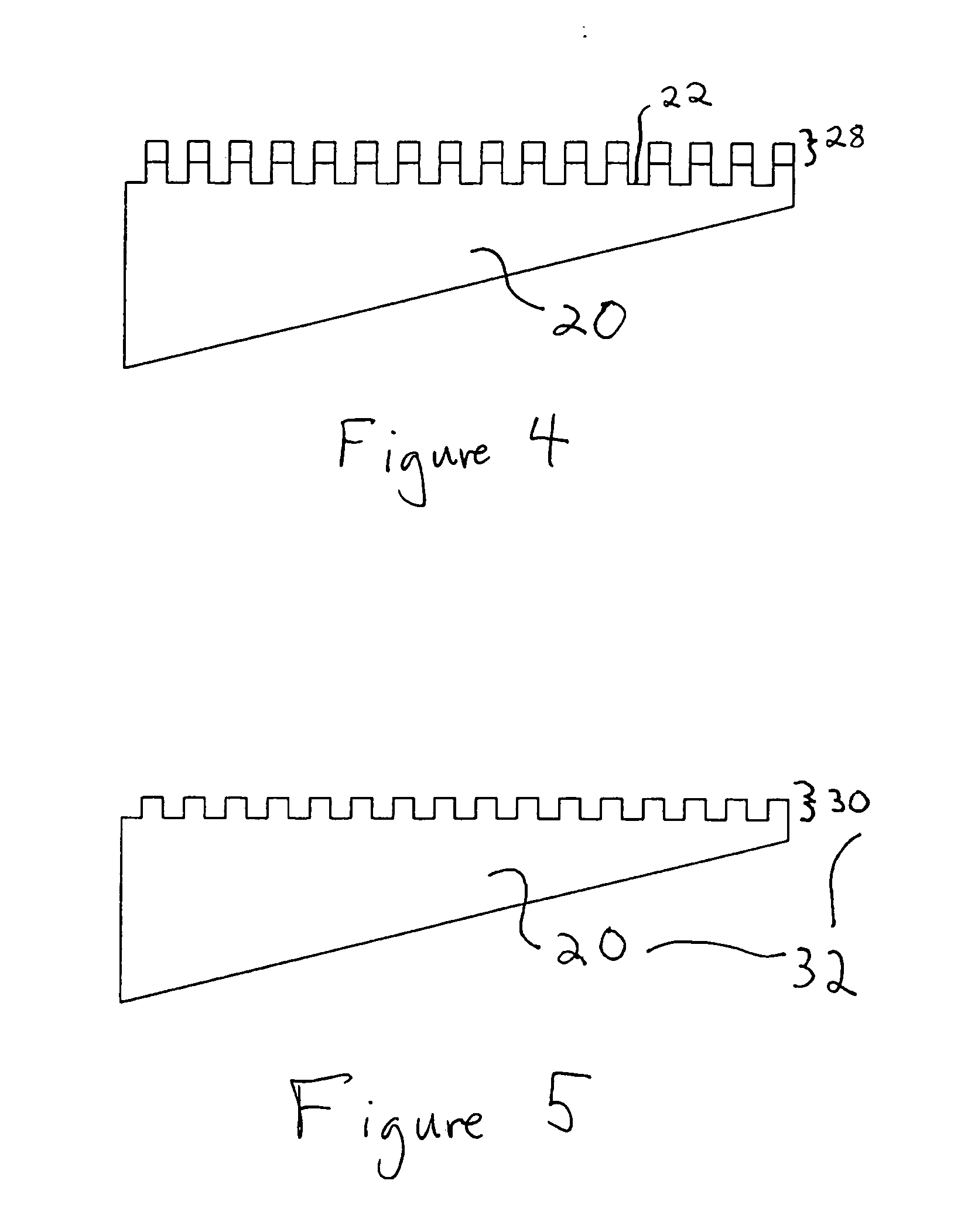Bulk optical elements incorporating gratings for optical communications and methods for producing
- Summary
- Abstract
- Description
- Claims
- Application Information
AI Technical Summary
Benefits of technology
Problems solved by technology
Method used
Image
Examples
example 1
Bonding of High Purity Fused Silica Surface
[0083] Corning product code 7980 HPFS.RTM. bars were bonded by the method of FIG. 12 and the bonding between the bars at a temperature of 200.degree. C. was strong enough so that one of the bars failed at 160.9 psi.
example 2
Bonding of Polarcor.TM. Surfaces
[0084] Polarcor.TM. is a borosilicate glass. A proprietary polarization process makes the outer surfaces act as polarizers. Active polarization occurs in the outer 20-50 microns of the glass surface. Polarcor bars were bonded together by the method of FIG. 12 at a bonding temperature of about 200.degree. C. A first set of samples resulted in the bond between the bars delaminating at 45.8 psi. A second set of samples was annealed to about 500.degree. C., and these bars failed in tension at 127.9 psi.
examples
Illustrating Lithium-Enhanced Bonding
[0085] Sample Preparation
[0086] For each of the samples listed in Table I below, the surfaces were bonded at a temperature of about 200.degree. C. Prior to sealing of the surfaces, they were polished to less than about 0.5 microns flatness. A detergent such as Microclean CA05 was used to clean the samples, and after a water rinse, the sample was soaked in 10 volume % nitric acid for one hour. The acid-soaked samples were rinsed again with water, and then the samples were soaked in a 15 volume % ammonium hydroxide solution for 60 minutes. The samples were rinsed again, and the bonding surfaces were maintained in a wet condition and bonded under a pressure greater than about one pound per square inch and at a temperature noted above.
[0087] The results are shown in Table I below. The table lists fracture behavior of chemically bonded surfaces tested in tension, with all seals generated at 200.+-.5.degree. C. with no subsequent annealing cycle. Stren...
PUM
 Login to view more
Login to view more Abstract
Description
Claims
Application Information
 Login to view more
Login to view more - R&D Engineer
- R&D Manager
- IP Professional
- Industry Leading Data Capabilities
- Powerful AI technology
- Patent DNA Extraction
Browse by: Latest US Patents, China's latest patents, Technical Efficacy Thesaurus, Application Domain, Technology Topic.
© 2024 PatSnap. All rights reserved.Legal|Privacy policy|Modern Slavery Act Transparency Statement|Sitemap



